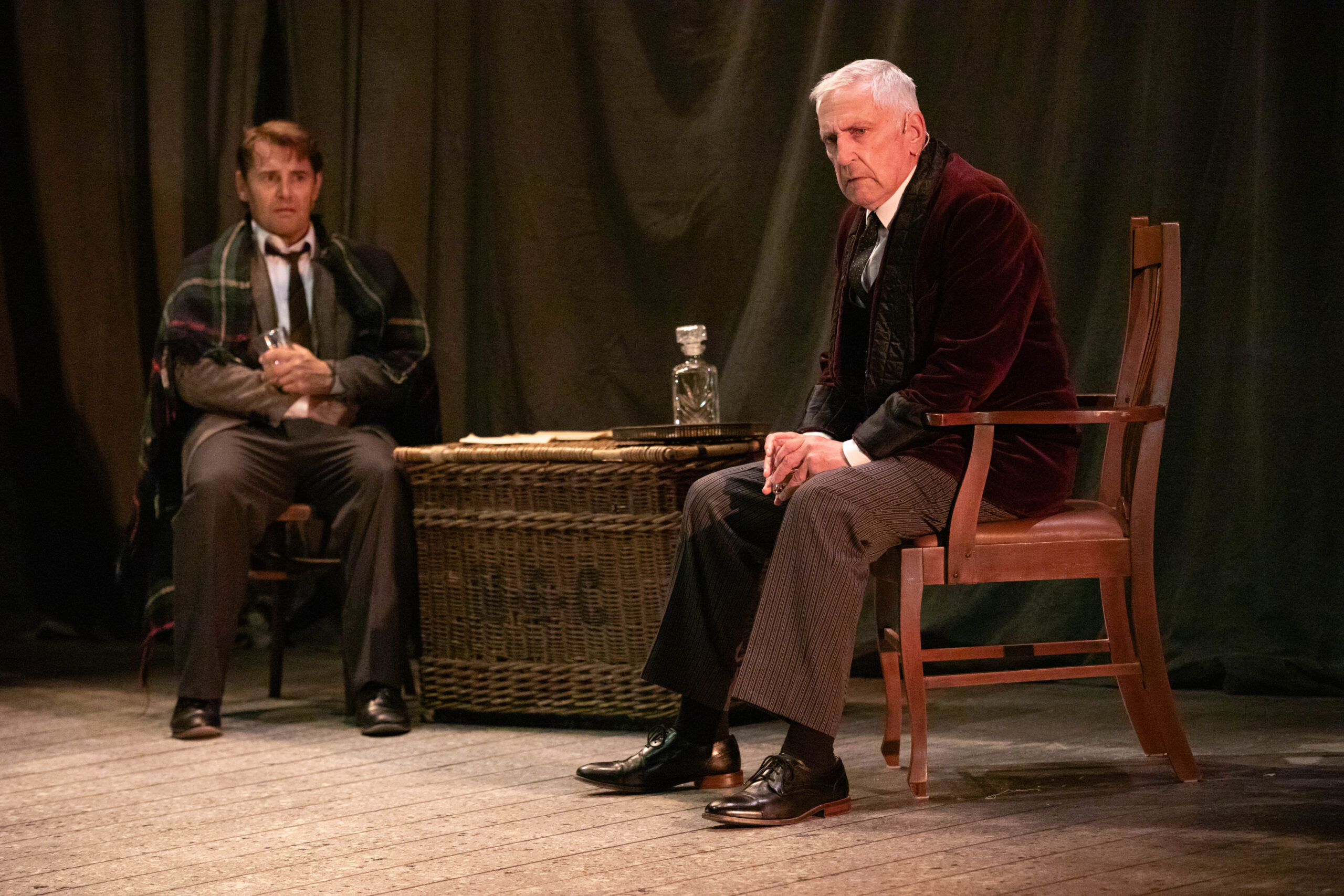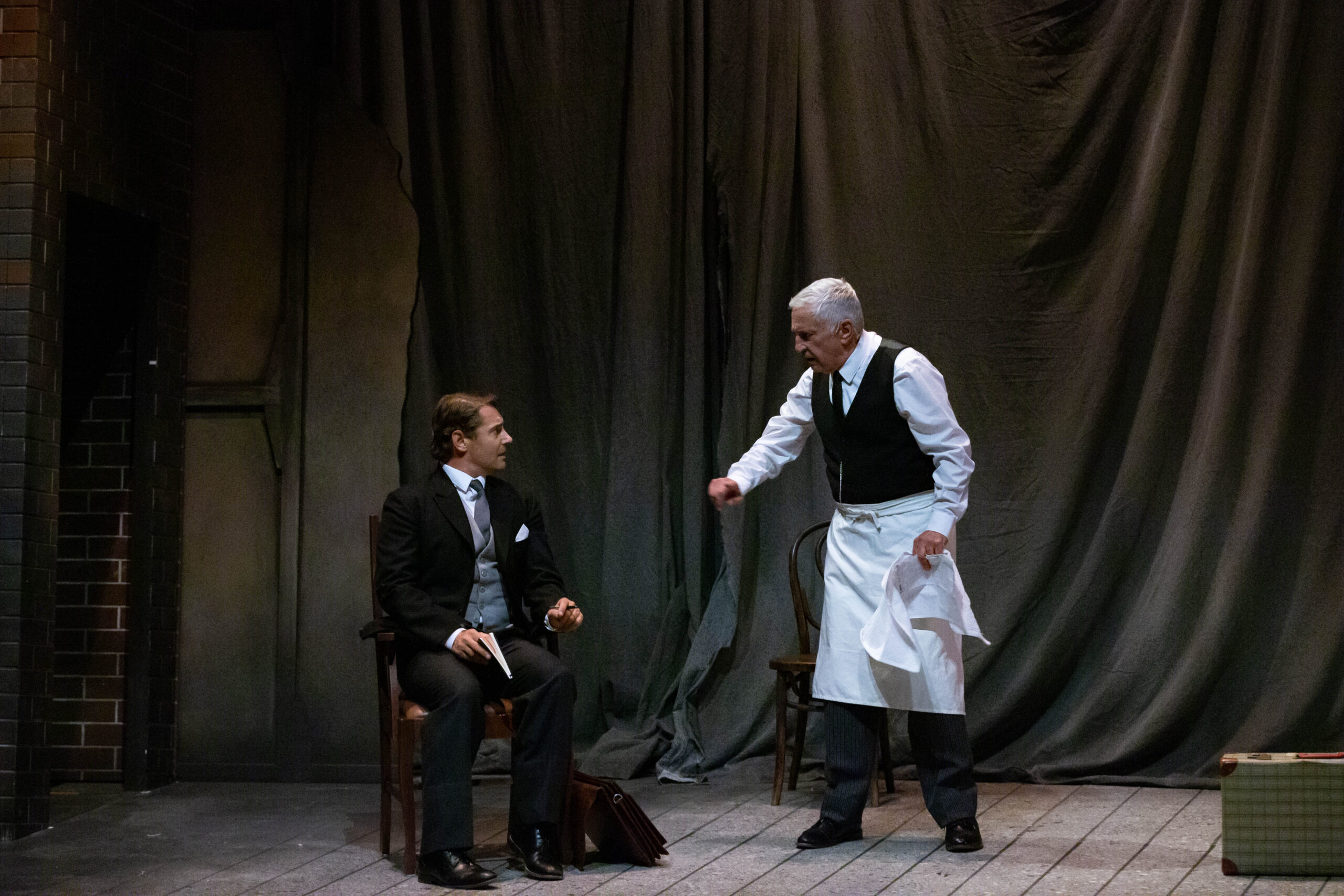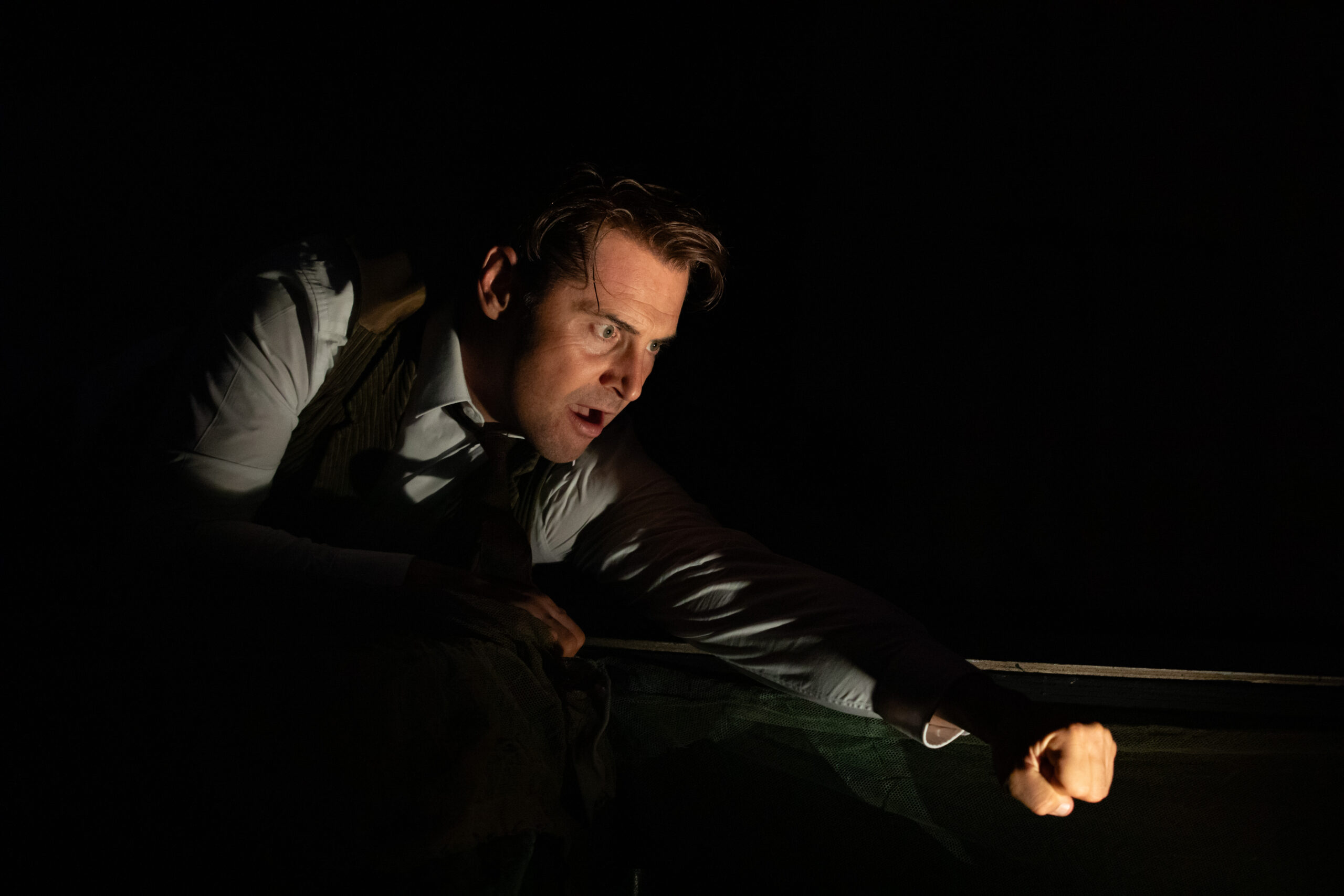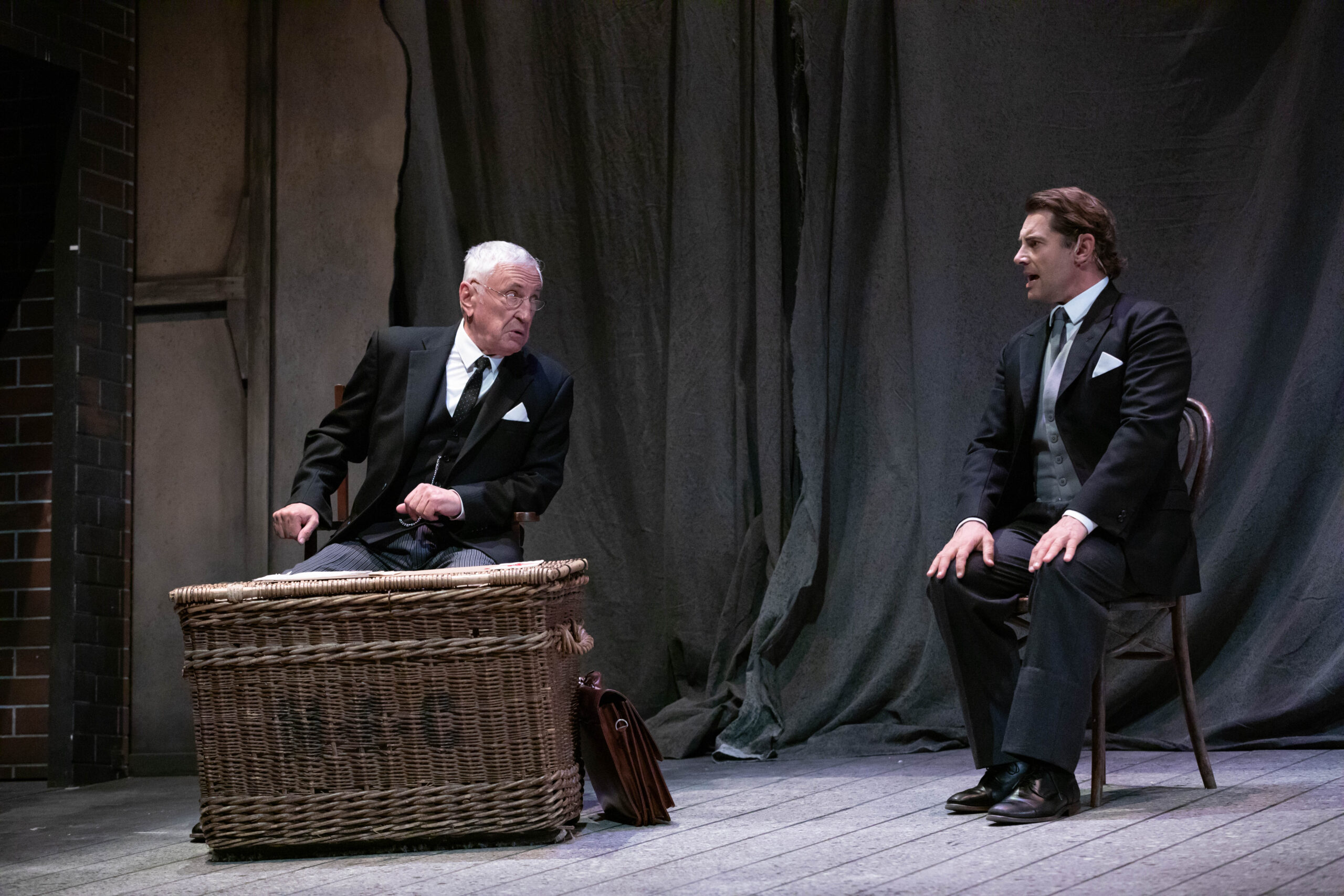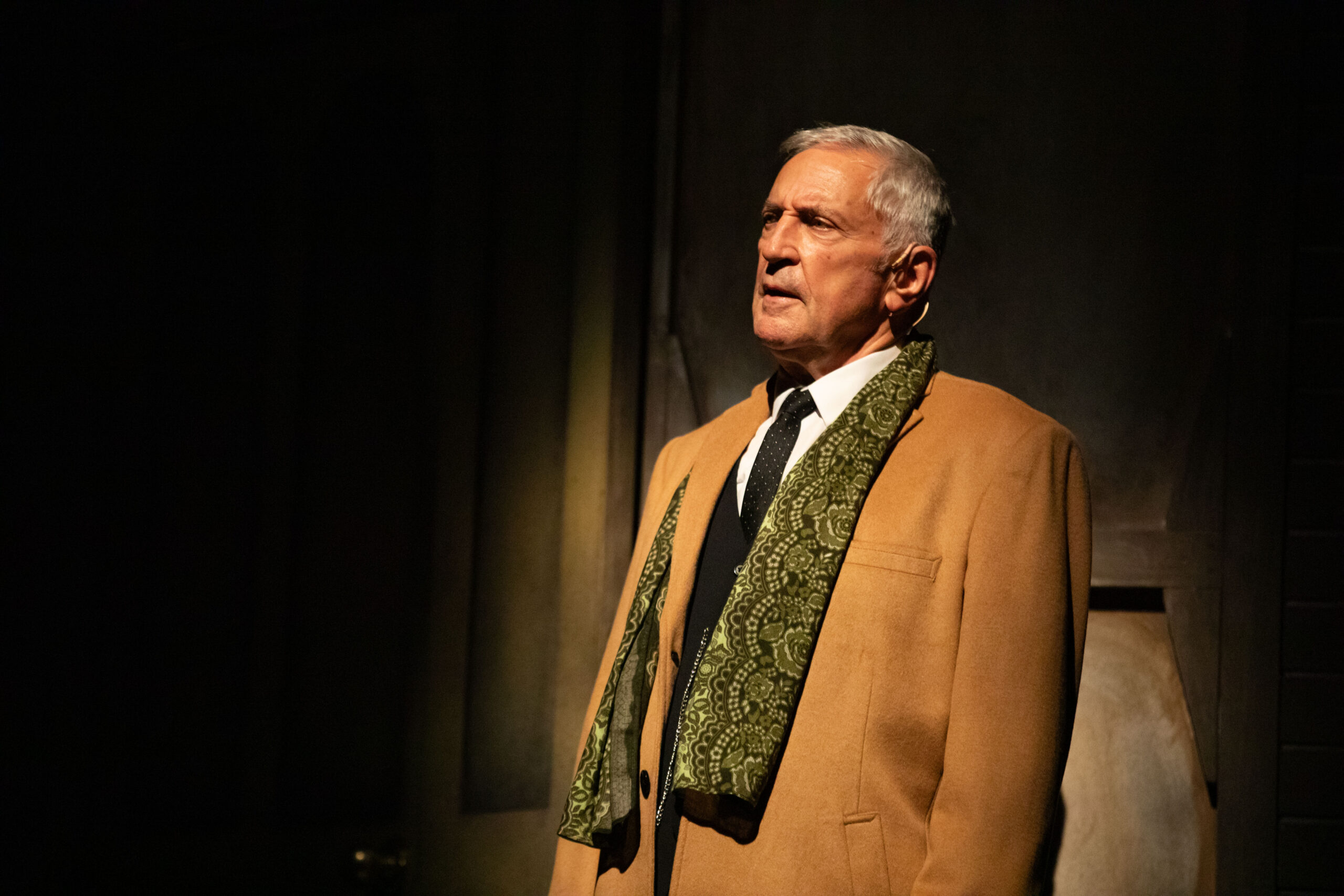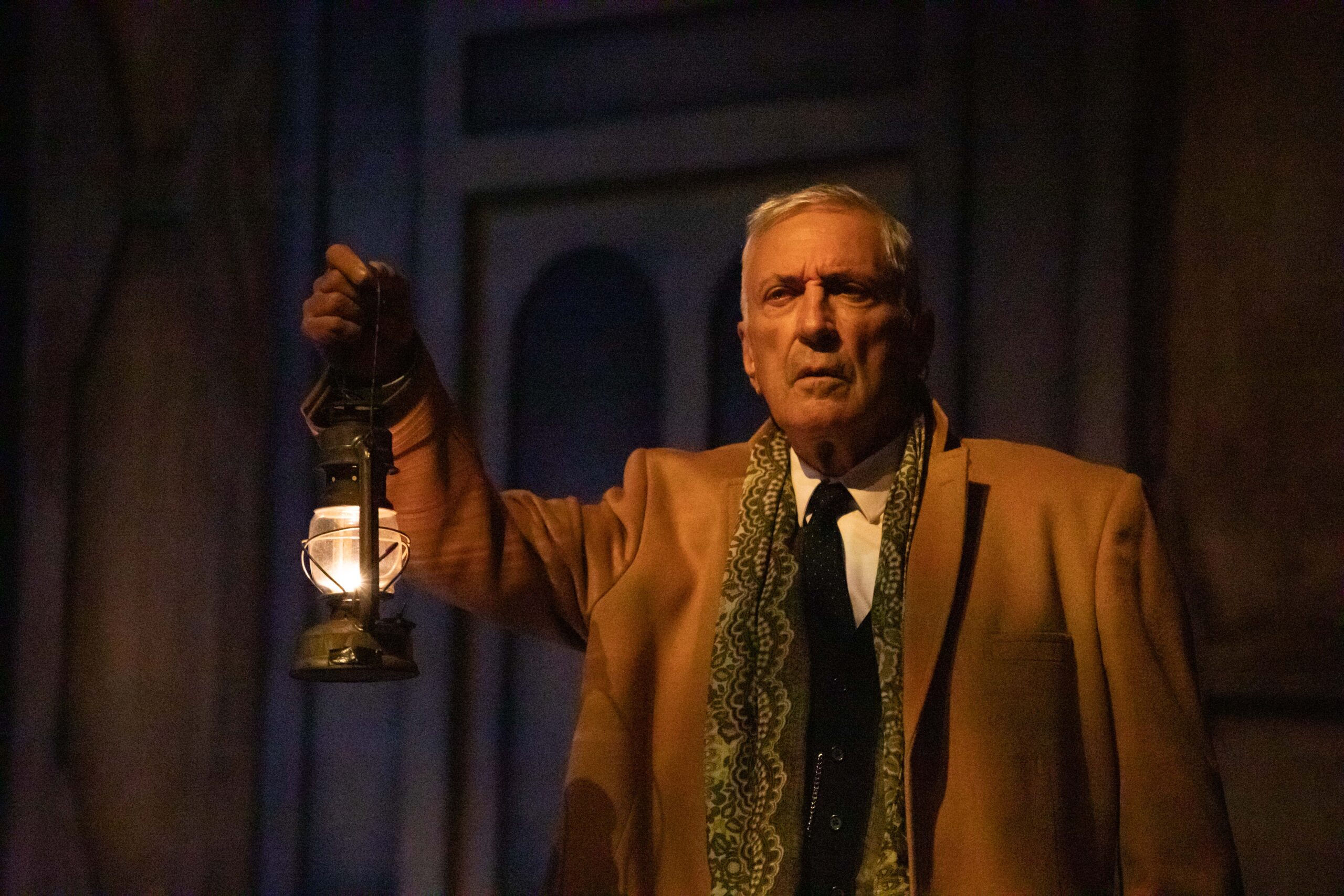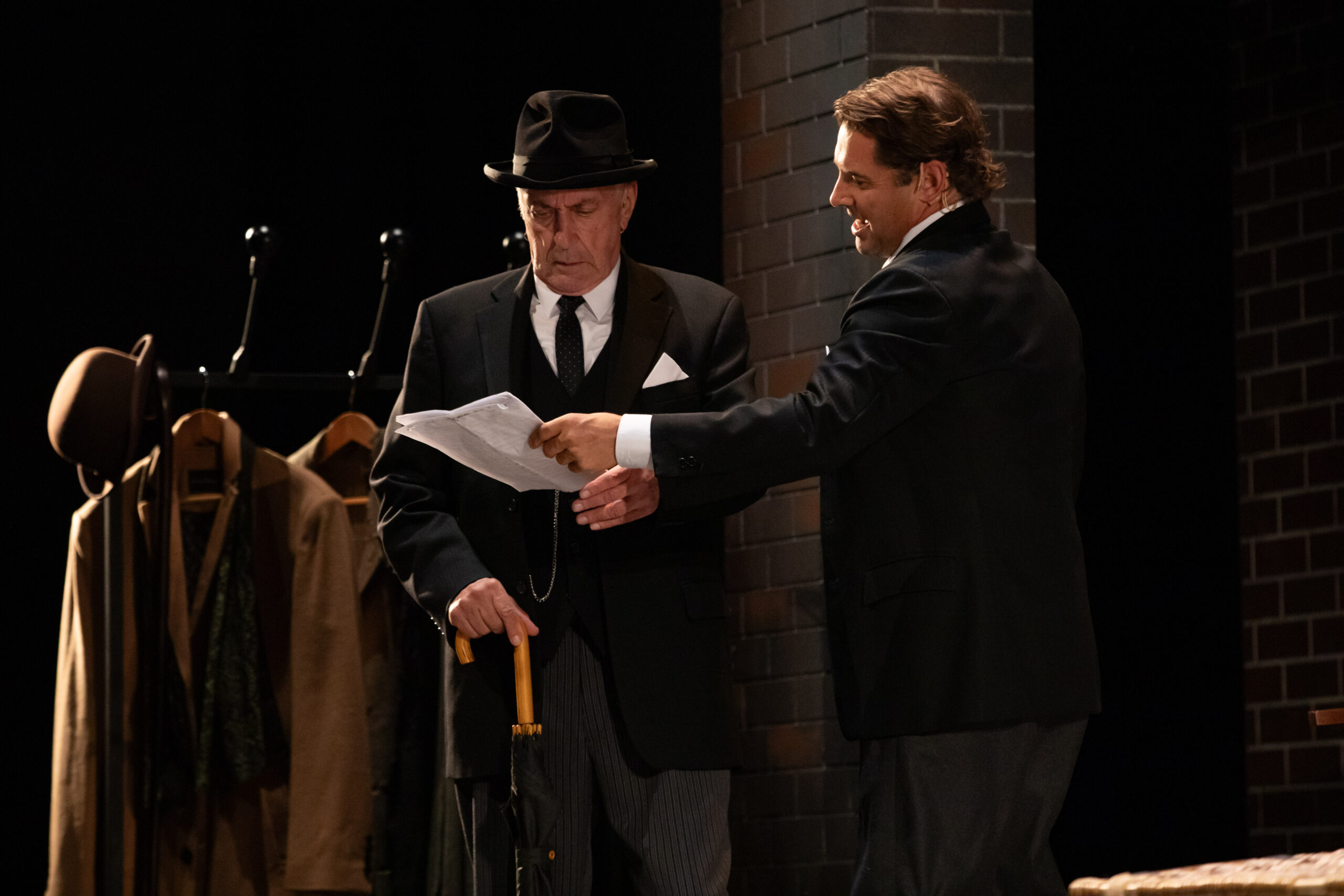Dress Circle
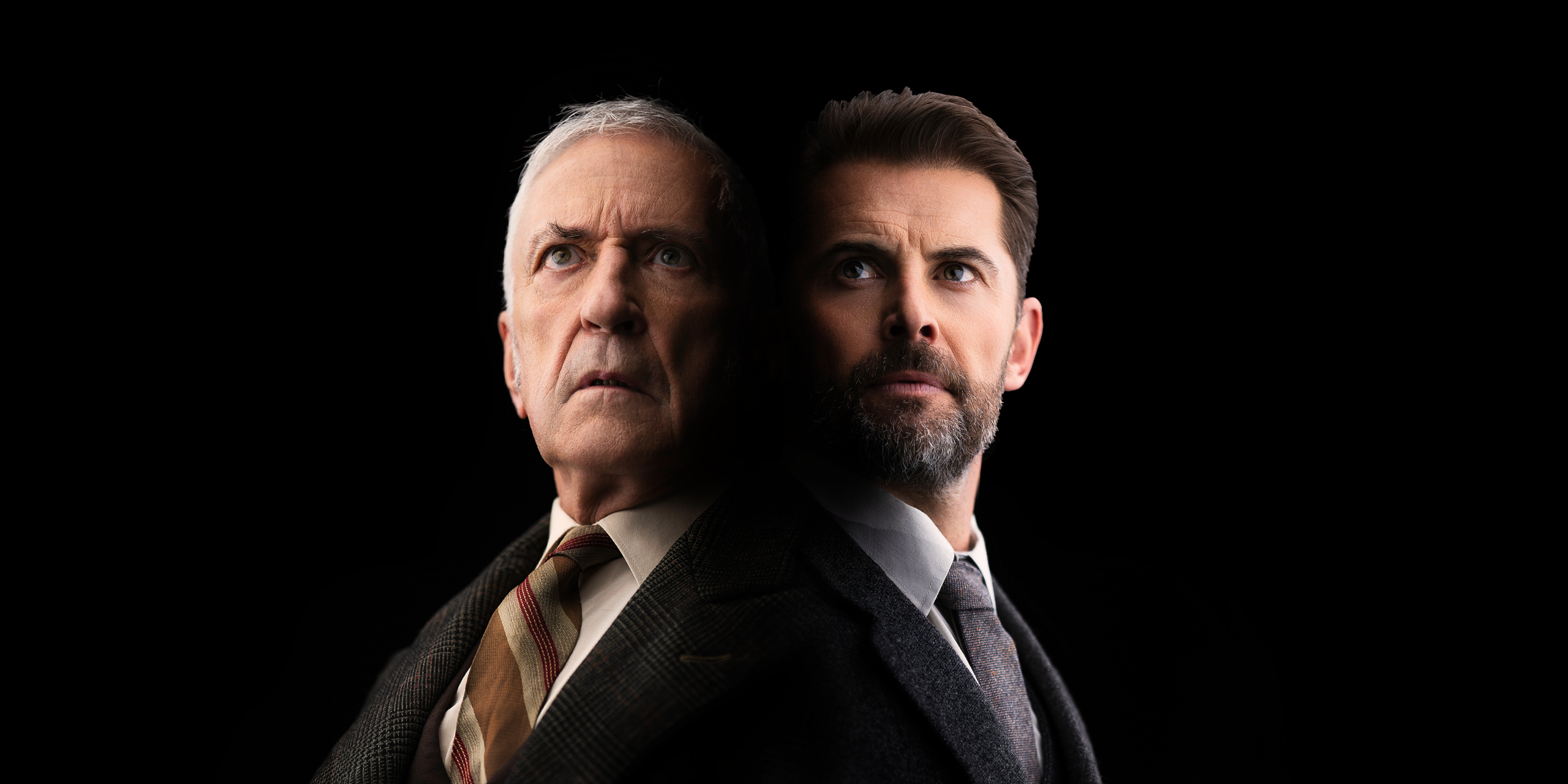
SPELLBINDING SIMPLICITY
The Woman in Black is a captivating and brilliantly suspenseful evening of theatre, featuring two of Australia’s best actors, John Waters (Doctor Doctor, Offspring, Rake) and Daniel MacPherson (Land of Bad, Foundation, Neighbours).
As Britain’s second longest running play after The Mousetrap, Susan Hill’s 1983 novel (adapted for the stage by playwright Stephen Mallatratt), The Woman In Black tells the story of a lawyer obsessed with a curse that he believes has been cast over him and his family by the spectre of a ghost. He engages a sceptical young actor to help him tell his terrifying story and exorcise the fear that grips his soul, they find themselves caught up in a world of eerie marshes and moaning winds – all the tropes of gothic horror.
Creatively, the narrative unfolds as the characters engage the audience with their storytelling. The play ingeniously blurs the boundaries of great acting and the delivery of important information to the audience. In fact, if this production proves one thing, it’s that theatre is a powerful medium because, like a good novel, it can stimulate our imaginations and create a world into which we are inexorably drawn.
Without big budgets, huge stars and the production values of film, the chilling plot unfolds on an open and almost empty, raked stage. The audience is not distracted by sets, instead we witness a ghost story, and the suspense, anticipation and creeping terror transfers us to somewhere far more compelling than a mere stage. The story takes hold of our senses where ghost stories weave their magic.
The highly creative use of lighting, props, and stage effects transforms the narrative. Light and shadows create an ominous atmosphere. And while the simple set, designed by Michael Holt, seems a bit kitsch, it doesn’t overpower the cast.
Directed by Robin Herford, the two main characters, each play multiple roles. Kevin Sleep’s lighting is judicious yet chillingly effective, especially when coupled with Sebastian Frost’s smoke and sound effects. There’s lots of shrieking and gasping from the audience, who are startled at the most unexpected moments.

The Woman in Black is a testament to the power of minimalism in theatre. It stays true to Hill’s novel of “Gothic traditionalism”, as she puts it: “Darkness is a powerful ally of terror; something glimpsed in a corner is far more frightening than if it’s fully observed.”
On the stage, a large wicker laundry basket becomes a solicitor’s desk, then a railway carriage, an altar, a pony and trap and finally a bed. This fosters the ‘theatre of the mind’ concept, by making a virtue of the stage’s shortcomings to centralise the story, proving the adage that simplicity is just as effective. Less is more.
Daniel MacPherson and John Waters portray their multi-character roles seamlessly and gracefully. They have the ability to allow the audience to experience their fear and to also appreciate their perfect comic timing.
Furthermore, Waters, demonstrates some remarkable accent work, while MacPherson’s performance is flawless. He does not falter.
While the third actor, who plays the eponymous Woman In Black, remains uncredited, she cunningly leaves the audience feeling they might have actually seen a ghost. Most of the work of frightening the audience falls on “her” shoulders, evident by the screams of the audience around me. This actor deserves a billing credit but must remain anonymous.
The Women in Black is worth seeing, especially to be rewarded by the performance of two formidable Australian actors – John Waters and Daniel MacPherson. You are sure to be enthralled by this spellbinding story.

